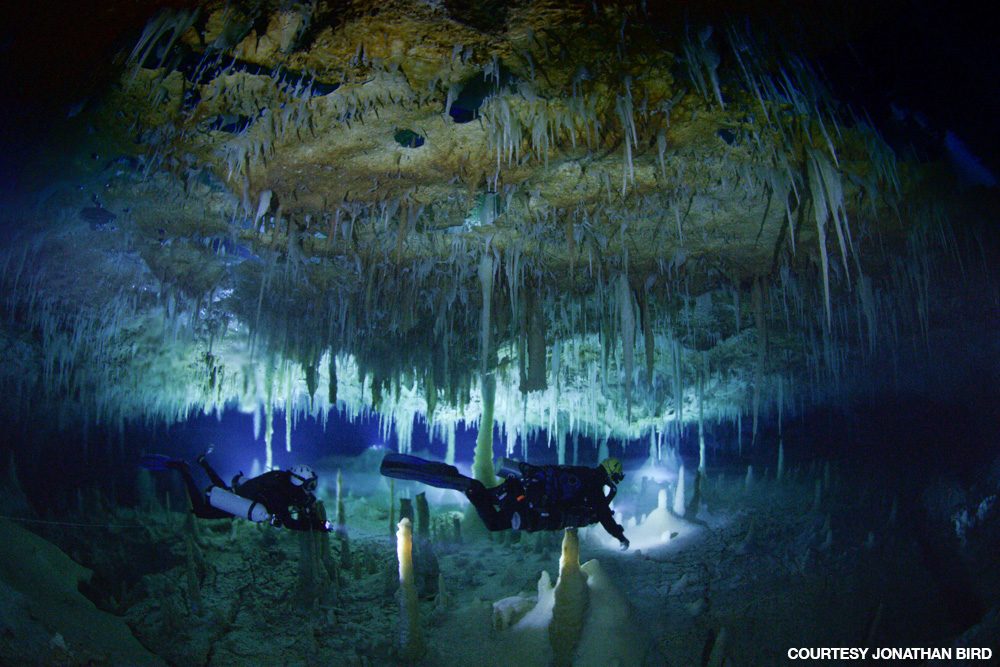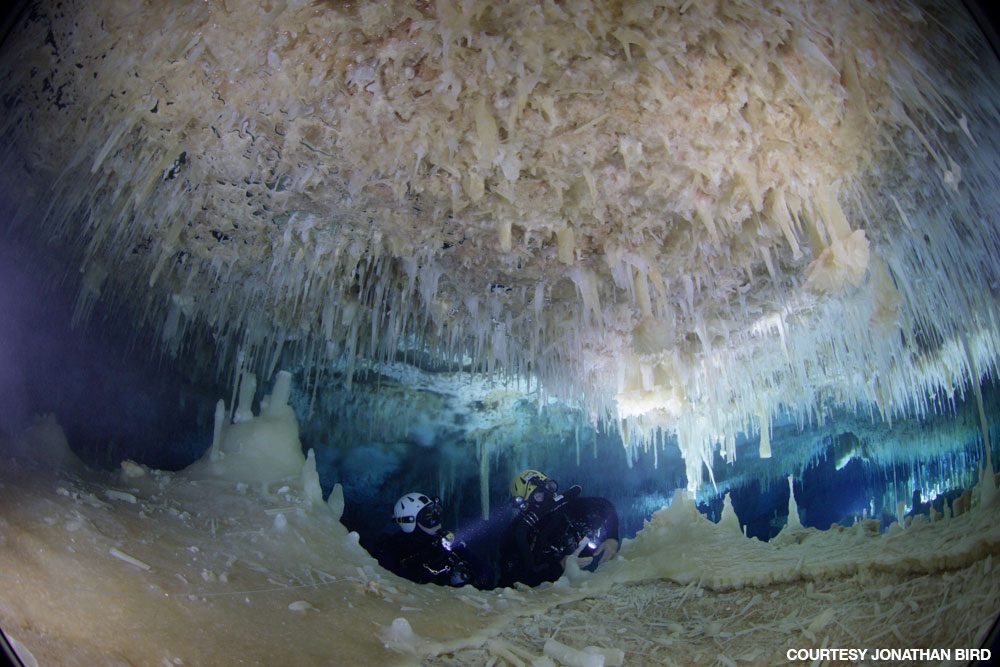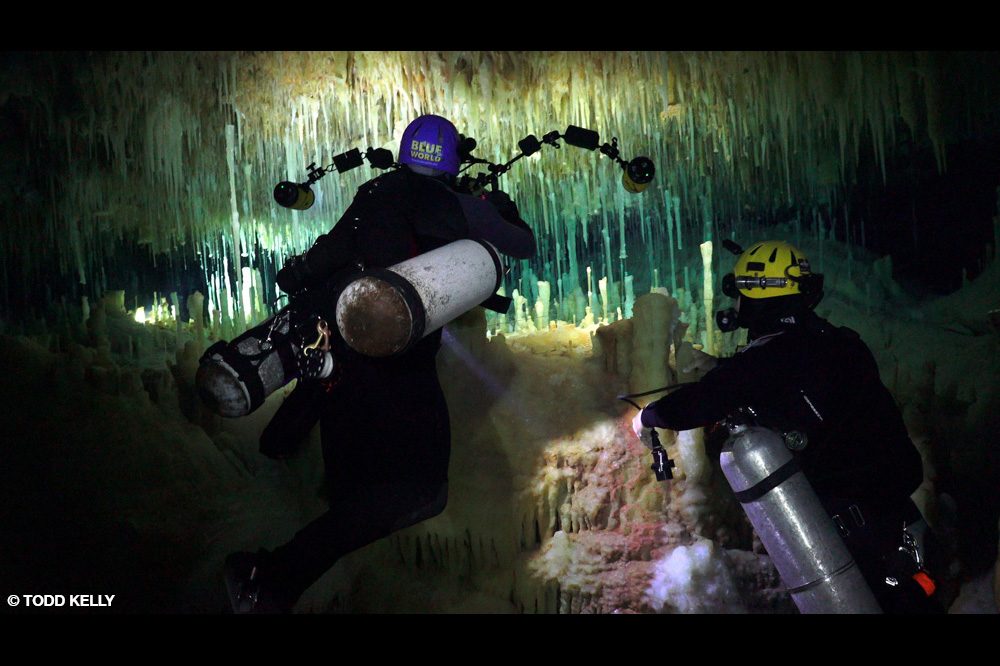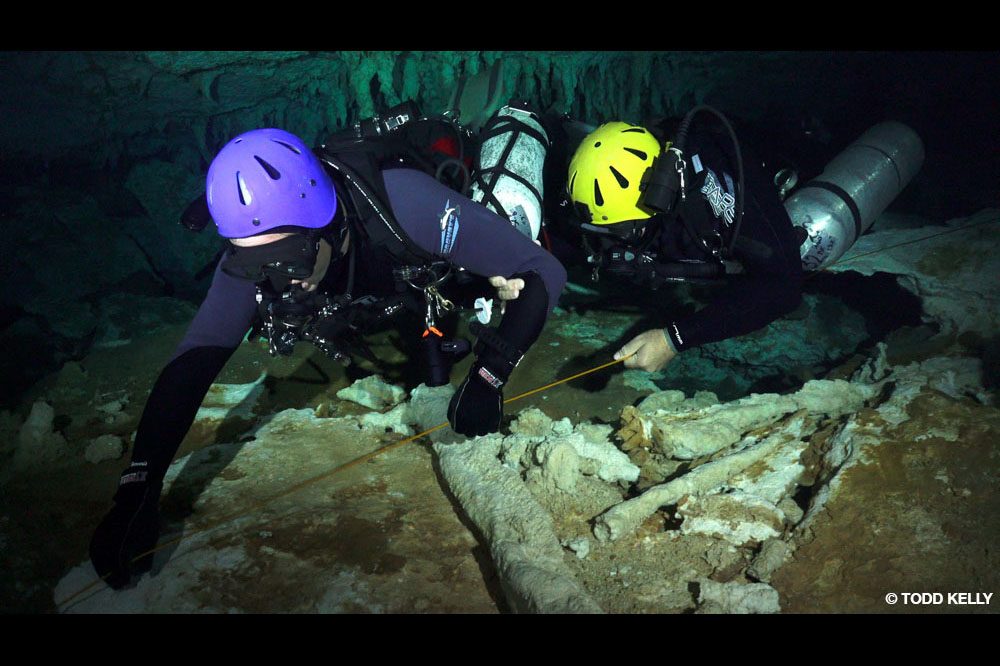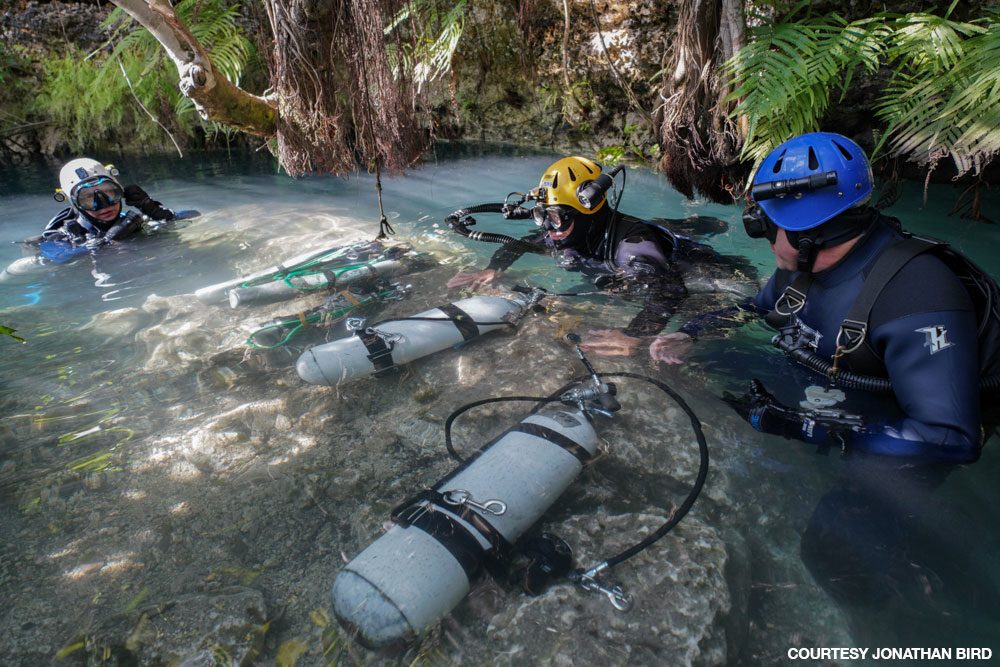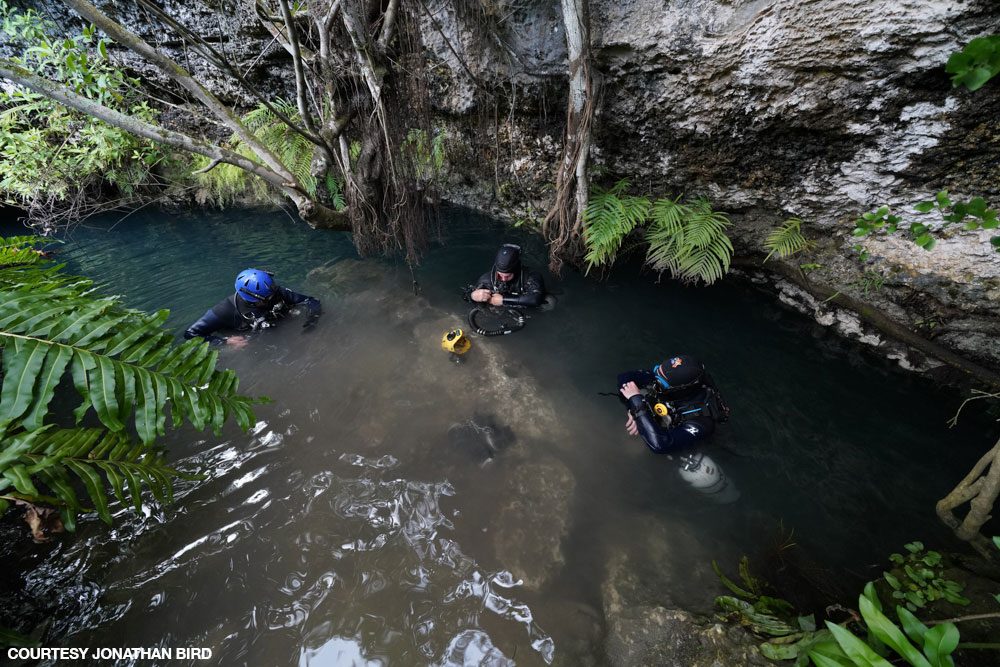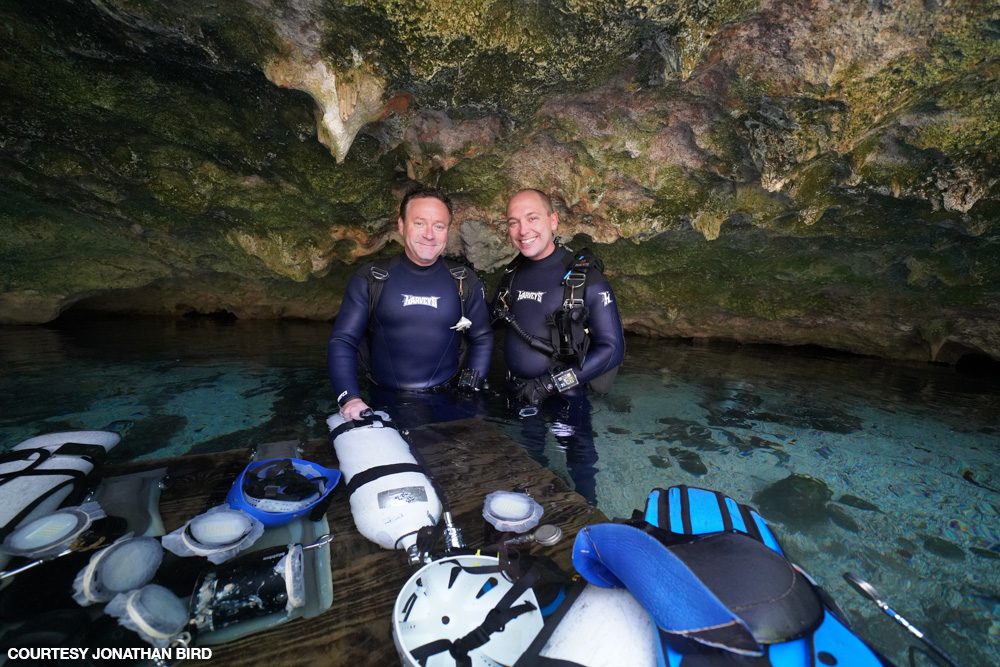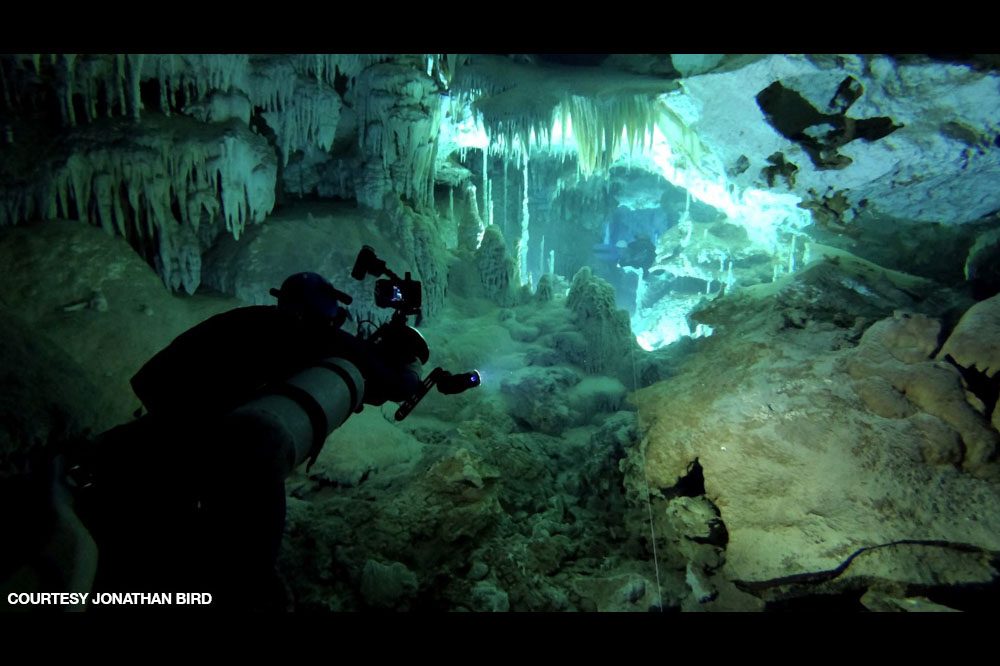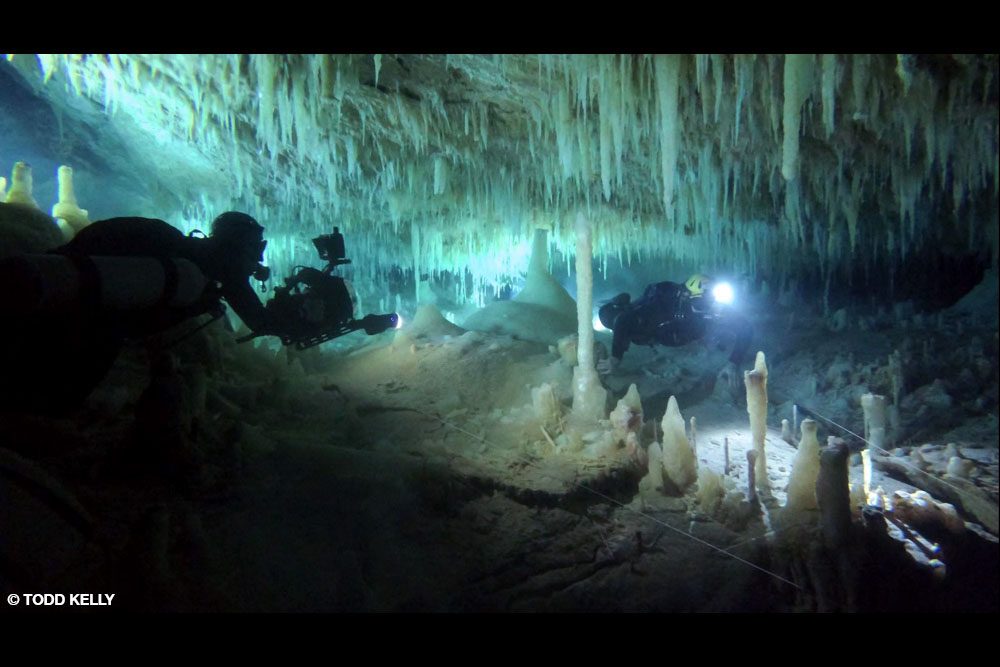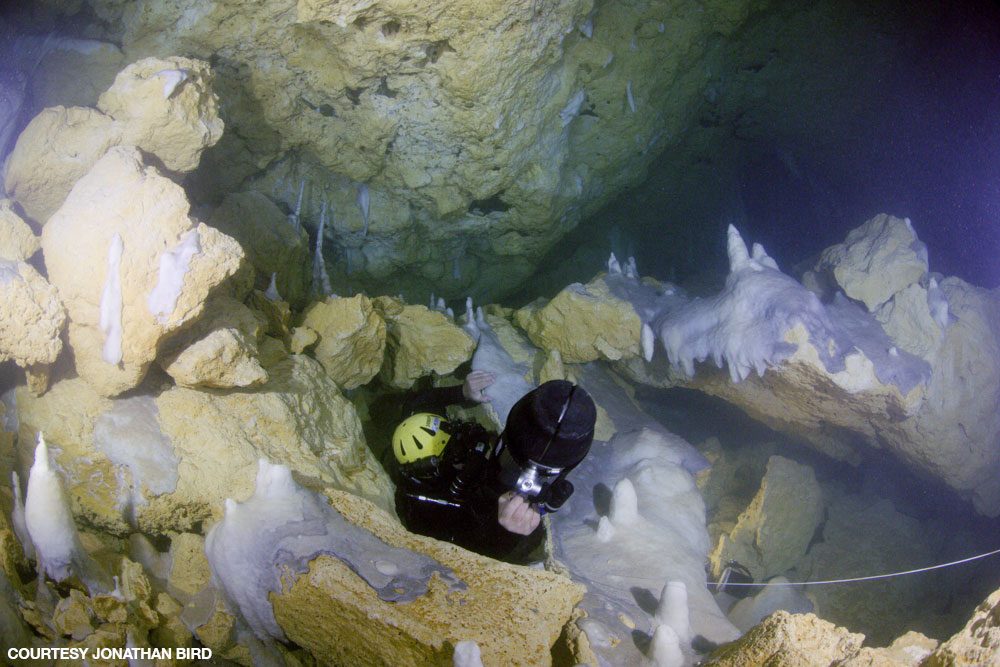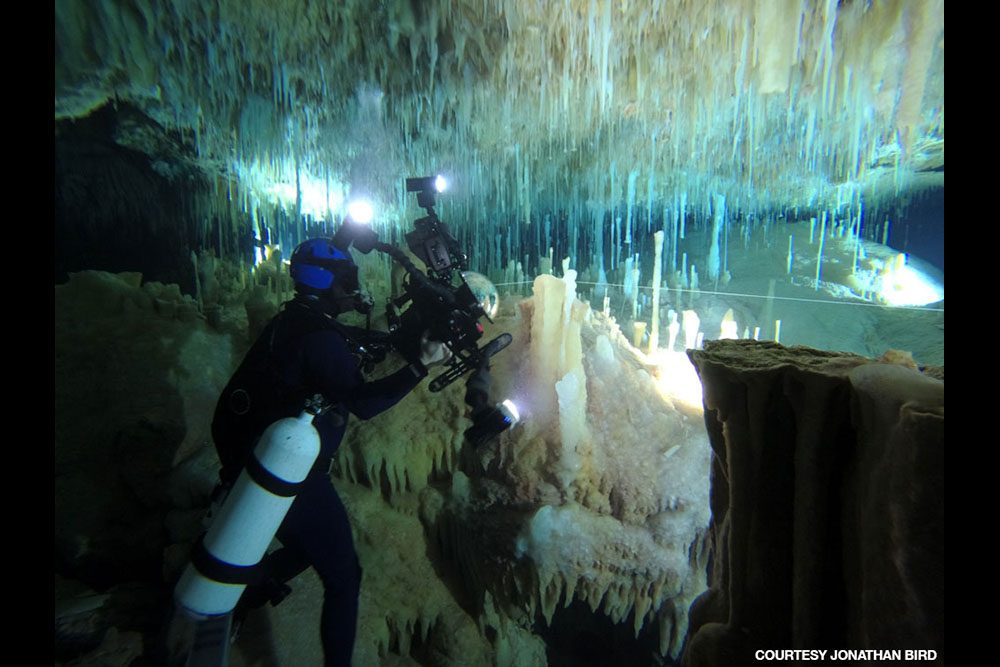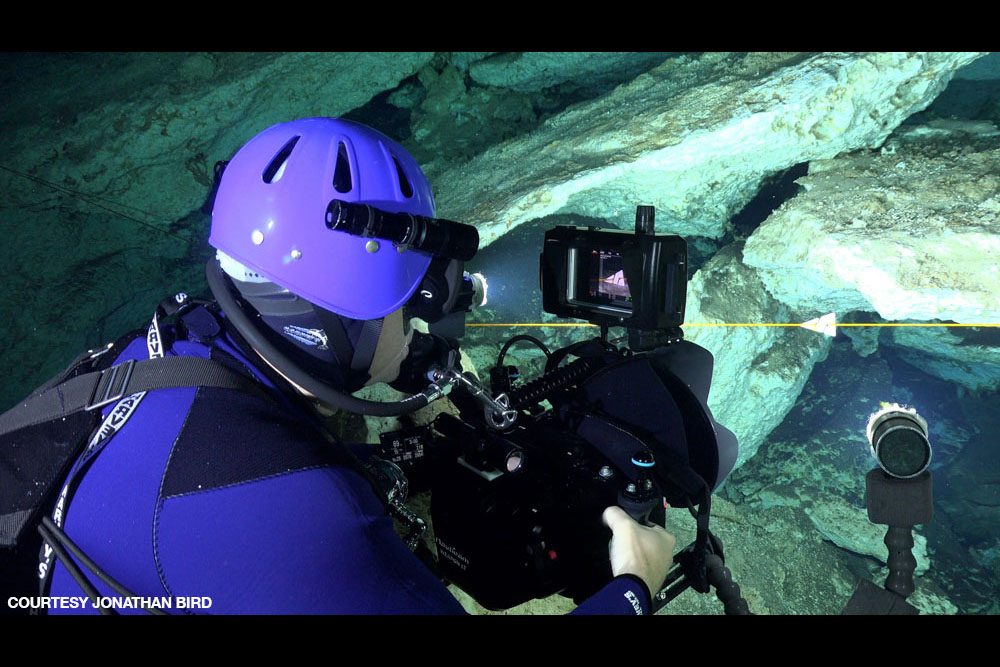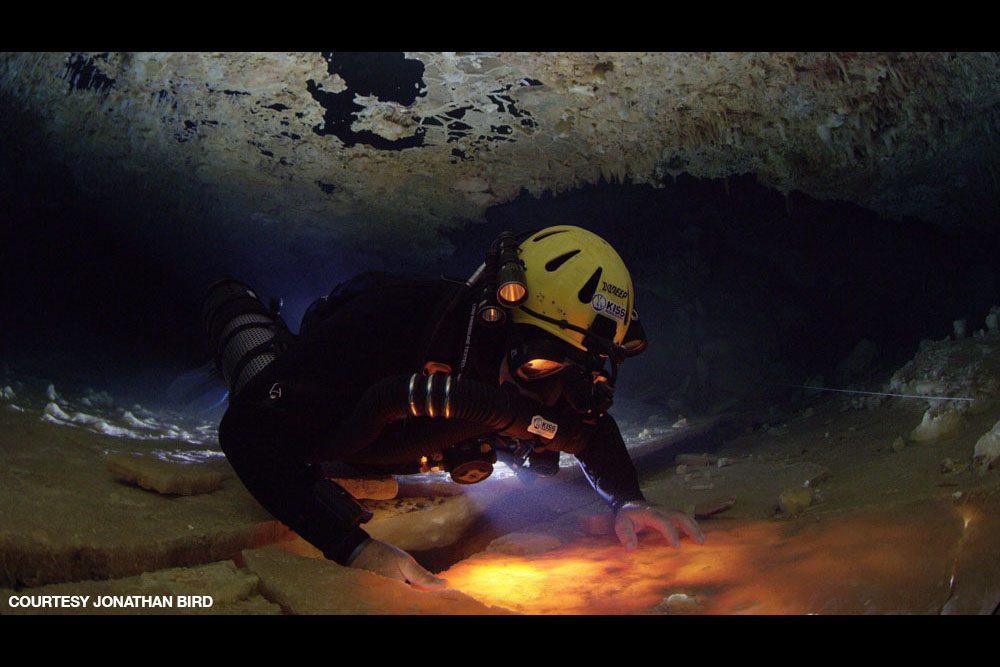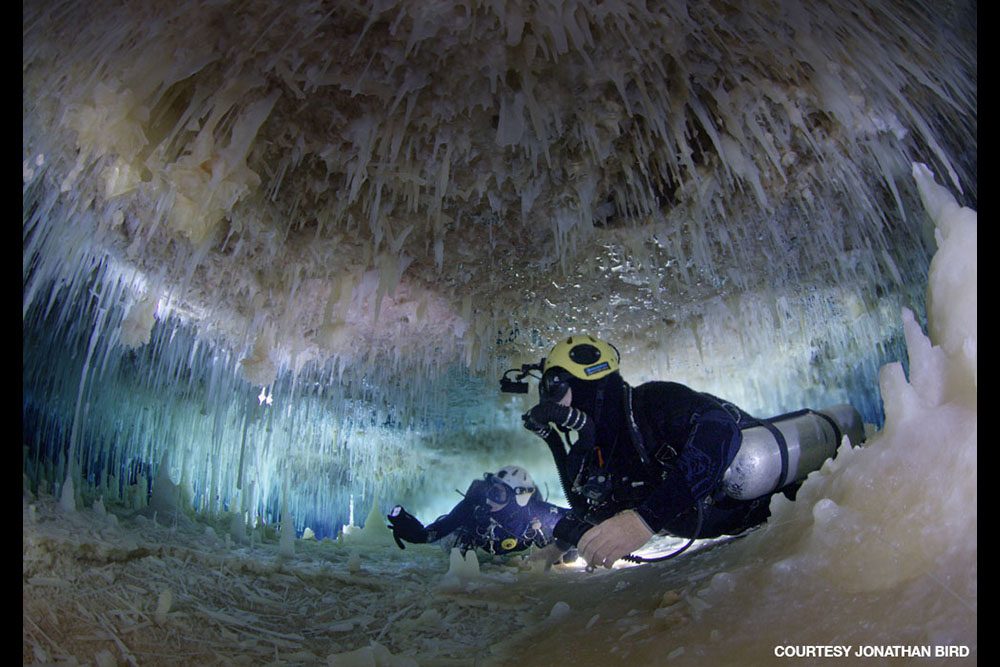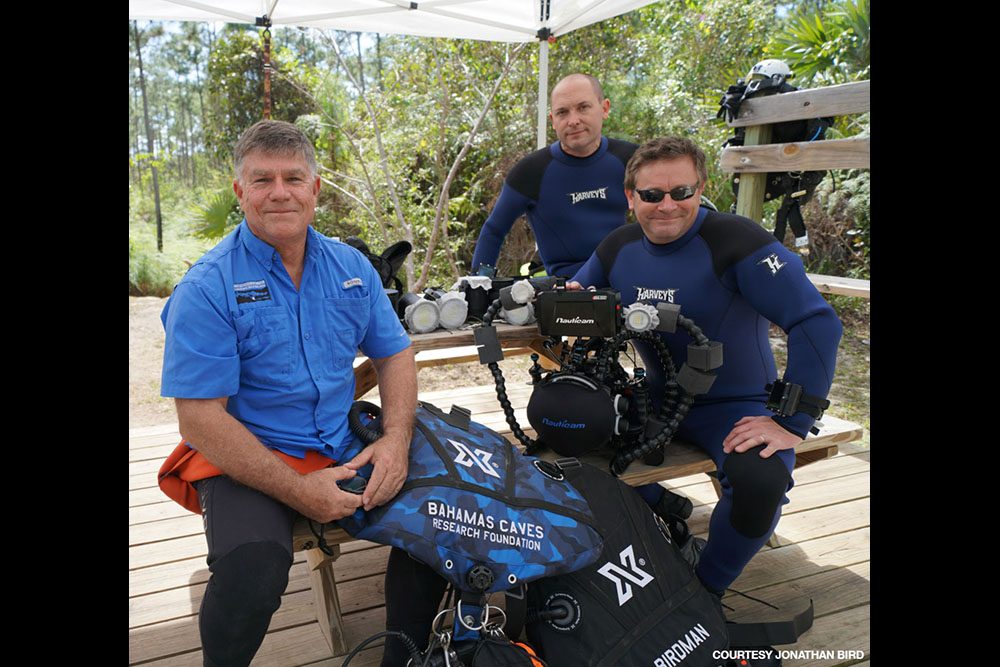Every documentary filmmaker eventually dreams of making an IMAX® film. After all, it’s the biggest, most impressive film format in the world. Who wouldn’t want to see their film on a 70-foot screen? For years I dreamed of making my first IMAX film. When Ancient Caves was released in 2020 (unfortunately just as the COVID-19 pandemic shut down every theater in the world), I had finally achieved my goal. But the path to get there was long.
It started in 1998, when Sport Diver magazine invited me to attend a press trip to the Riviera Maya region of Mexico, organized by the tourism board. I arrived with a bunch of journalists, not all of whom represented scuba diving magazines. Many of us, however, wanted to focus on diving. Our hosts offered us a few different diving options for the week. One option involved cenote diving, which sounded pretty cool to most of us. By the end of the week, I was captivated by these beautiful realms, even though as an open-water diver I could only explore the cavern zone (where daylight is still visible) under the supervision of a cave-diving instructor. I had no interest in going any further into the caves.
In the cavern alone I saw plenty of beautiful stalactites and stalagmites, ethereal beams of light, crystal-clear water, and even a few fish. It seemed to me that I could see everything I needed to see in the cavern zone. Besides, as my friends reminded me, cave diving is dangerous.
Fast-forward 10 years, and I was back in Mexico filming cenotes for my television program, Jonathan Bird’s Blue World. While again limited to the cavern zone, we pushed the boundaries of what we were allowed to do to make it look more like cave diving. By 2014 we had filmed cenotes and blue holes all over Mexico and the Bahamas — all the while never actually cave diving. We even found a cave in Mexico that was only half filled with water, so we could go beyond the cavern zone to find blind cavefish. It looked like cave diving, but technically it wasn’t — there was air (and sometimes snorkelers) above us.
One day a cave-certified friend of mine shared her concern that we were sending the wrong message with all this quasi-cave diving. She suggested that we get the proper training and equipment and present cave diving correctly. Of course, she was absolutely right. The time had come to admit that I was fascinated by caves, even though for years I had been saying that there was nothing interesting in there to film.

Around that same time I had seen an amazing story in National Geographic by Wes Skiles — one of the greatest underwater cave photographers and filmmakers of all time. The article featured the Crystal Caves of Abaco, Bahamas. I desperately wanted to make a Blue World segment about those caves. There was no question I would need to become a fully certified cave diver. The caves of Abaco are under the stewardship of Brian Kakuk, a world-renowned cave explorer and instructor who lives on the island, so what better way to film these caves than to get my training from the man himself?
Most people do their cave training somewhere convenient or cheap and then work their way up to Abaco. Getting cave-certified on Abaco is like taking climbing lessons on Mount Everest. But why not?

When I began Brian’s class, I had just finished a film for fulldome theaters about underwater astronaut training at NASA, and I had turned my thoughts once again to IMAX. I needed a really good idea for a giant-screen film. At that time I was thinking of sharks. Sharks sell. Everyone is fascinated with sharks. I have done several shark films for television. Maybe it wasn’t a totally original idea, but the classics are never a bad plan. This plan, however, would soon change.
My good friend Todd Kelly — and the only member of the Blue World film crew who was already cave-certified — joined me for the training with Brian. He participated in Brian’s sidemount class with me and then proceeded to film my entire cave-training regimen for an episode of the show. With all the hype about how dangerous cave diving is, I approached Brian’s class with trepidation, yet what I discovered was that it’s incredibly fun.
When you have been diving for almost 30 years the same way and with the same gear, everything becomes pretty much second nature. Now imagine being immersed in a world with new gear, new techniques, and lots of new rules to remember. I very much enjoyed the challenge. I had to learn to handle all kinds of possible equipment-failure scenarios for both me and my buddy. I had to learn how to deal with guidelines, silt-outs, darkness, disorientation, and panic. I even had to learn how to kick differently.
It was the most fun I’d had diving in years. It helped that Brian is a good instructor. He told me on the first day, however, that he wouldn’t go easy on me because I have a TV show! If I couldn’t master the material, I wouldn’t get the certification card.
The caves on Abaco are extremely fragile. Before Brian would take us into any of the really beautiful fragile places, we had to demonstrate perfect buoyancy control in all that new gear. Fortunately, I immediately fell in love with sidemount diving. It is so much more comfortable and convenient than backmount doubles, and the lower profile is a bonus. I often dive sidemount in open water now.
On the last day of the class, I passed the written exam and felt a little sad it was over. Those feelings passed quickly as I thought about all the adventures to come. The very next day I would finally get to take my camera into the Crystal Caves and film these special places I had seen only in photographs or with brief glimpses during my training. We had two days to shoot an episode of Blue World about the Crystal Caves of Abaco.
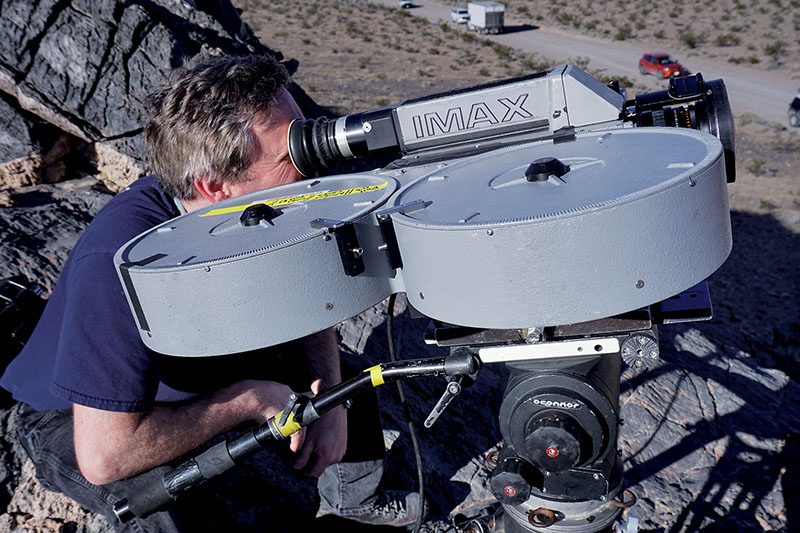

On the first dive we didn’t go anywhere too fragile or restrictive, with Brian watching to see how I would combine my new cave diving skills with handling the large Gates camera system I was using. The camera sometimes seemed harder to maneuver through tight spaces than my own body. Apparently satisfied that I was at least somewhat proficient with the big camera, Brian agreed to take us on the next dive into a section known as the Glass Factory — one of the most famous places in the cave diving world. My excitement was hard to contain. I couldn’t wait!
As I suited up I silently prayed that nothing would go wrong with the camera or lights that would prevent me from filming this spectacular room. Fortunately, everything was fine with the camera. When we finally crawled into the Glass Factory, keeping low to avoid breaking the crystalline soda-straw formations on the ceiling, I had an epiphany. I had found the subject of my IMAX film. Surely this would be amazing in IMAX!
After the dive I couldn’t get my mind off the idea, and I immediately started discussing it with Brian and Todd. They must have thought I was nuts. I had done two post-certification cave dives, and now I had delusions of grandeur.
The story of how we pulled together the project is another adventure. In short, Todd and I returned to Abaco several more times to test different camera systems, and then we brought a larger team to shoot the sequences that appear in the film. It took a few years to get the film funded and off the ground.
In 2018, on the final shoot of the film, Brian, Todd, and I did a double-stage dive (four scuba tanks per diver) in the Abaco cave where I did my training. We filmed a room called Fangorn Forest in IMAX format. Even three years earlier, the camera technology did not exist to shoot that far back in such a tight cave in such high resolution. The three-and-a-half-hour dive was more than a mile round trip of swimming underground plus an hour of decompression. To this day, it is my single most memorable dive. Fortunately, I can relive it anytime I watch the film.
As I write this, it has been seven years since I received my cave certification. I have been lucky enough to be able to spin my new love of cave diving into Blue World episodes in Mexico, Florida, Belize, Portugal, and other Bahamian islands, with more adventures on the horizon.
It’s hard to believe I used to say about caves, “There’s nothing interesting in there!”
Explore More
Watch the trailer for the Ancient Caves IMAX film and see Jonathan Bird’s cave-diving certification journey in these videos. See more images from making Ancient Caves in a bonus photo gallery.
© Alert Diver — Q1 2023
